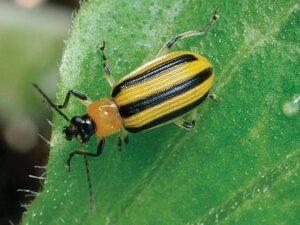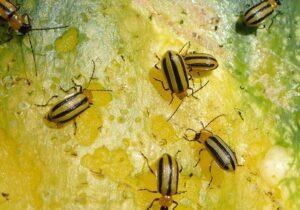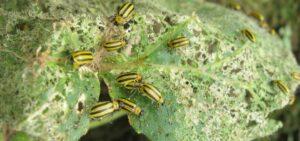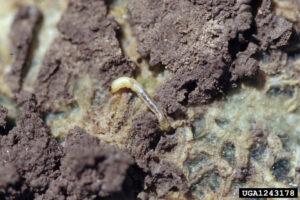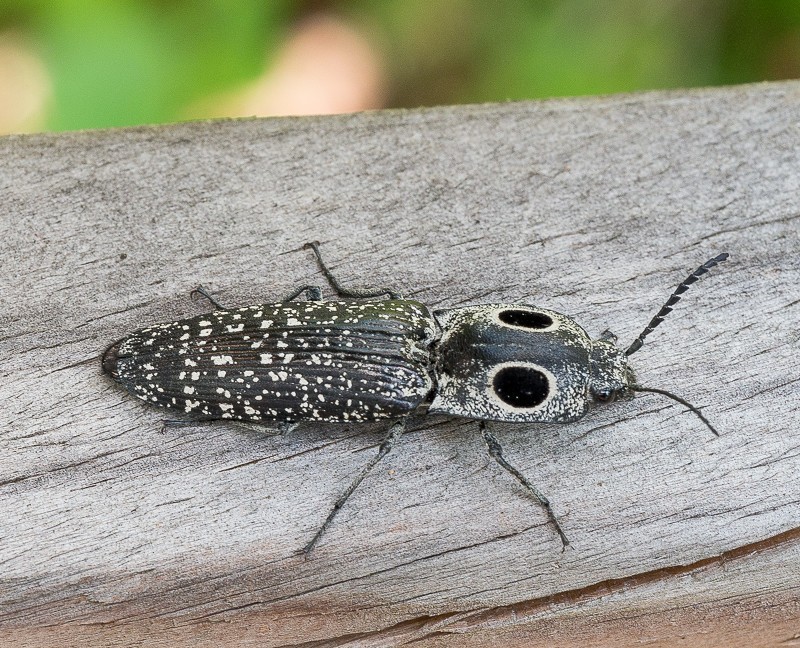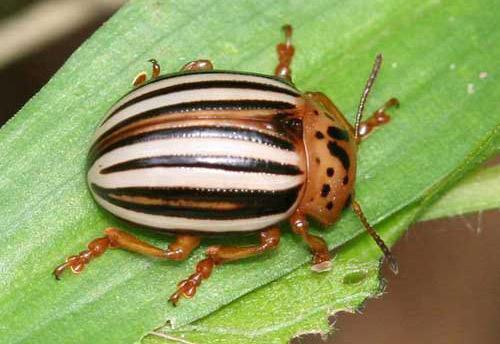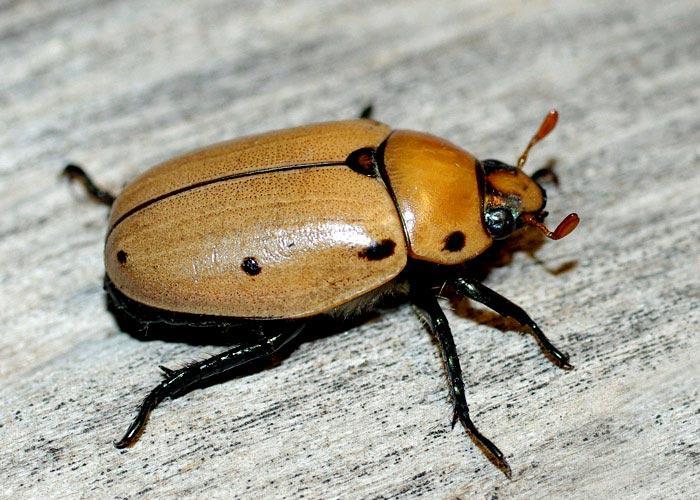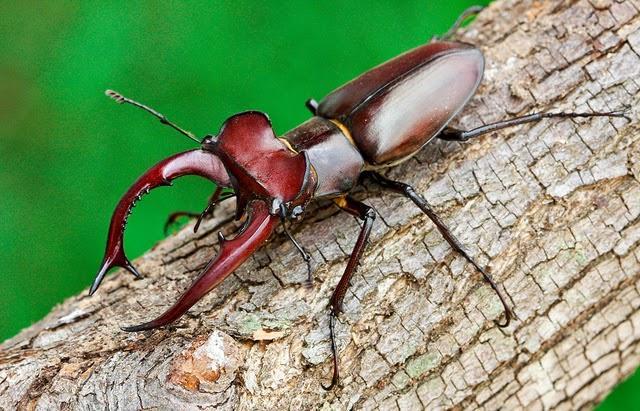Striped Cucumber Beetle (Acalymma vittatum)
Updated on
17/11/2022The striped cucumber beetle is a serious pest of agricultural crops. It attacks the cucurbit or gourd family crops in its larval and adult stages. The small beetle causes significant foliar and root damage to the host plants. Being a vector of bacterial wilt, Erwinia tracheiphila, it also transmits an incurable and fatal disease of cucurbits.
Scientific Classification
- Class:Insecta
- Order:Coleoptera
- Family:Chrysomelidae
- Genus:Acalymma
- Species:A. vittatum
Conservation Status
Description
It is approximately 0.2 inch (0.5 cm) in size, with its brown-yellow elytra fully covering the abdomen and traversed by three thick black longitudinal stripes. It has a black head, antennae and an orangish prothorax (the area behind the head).
Distribution: It ranges from eastern North America to the Rocky Mountains.
Habitat: Crops in the Cucurbitaceae family that includes squashes, cucumbers, gourds, and melons.
Do They Bite/Sting: No.
Lifespan: Around 8 weeks.
Predators: Ground beetles and wolf spiders.
Life Cycle
1. Egg Stage
Females lay eggs on or near the stem of a viable host plant that bright orange and less than 1 mm in diameter. They hatch after a short period.
2. Larva Stage
The white, slender, worm-like larvae with dark brown heads emerge from the eggs and feed on the roots and stems of the host plant. They pass through 3 instars in 2-4 weeks, attaining a final length of 1 cm.
3. Pupa Stage
The pupa is formed in the soil near the base of the host. It is white and 8-10 mm in length. It is broad in front and tapers at the back.
4. Adult Stage
Huge populations of adults emerge in spring from diapause and readily feed. Depending on the region, there can be 1-2 generations in a season. The last generation enters diapause waiting for winter to pass.
Comparison with Similar Species
Spotted Cucumber Beetle
It is bigger and has dark black spots instead of stripes.
Getting Rid of Striped Cucumber Beetles
Spraying pesticides is the most effective way of killing the beetle. Biological control using nematodes is still under research. Some research indicates vermicompost as an effective organic control measure. Another way of getting rid of the pest is by planting trap crops (that attract the beetle) around the main crop. The trap crop is later treated with insecticides.
Source
extension.usu.edu, i.pinimg.com, entomologytoday.org, earthwiseagriculture.net





